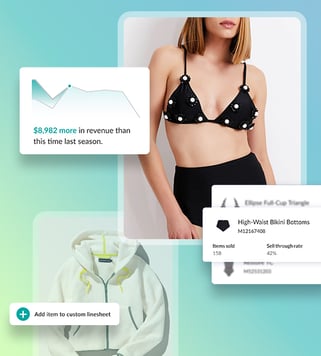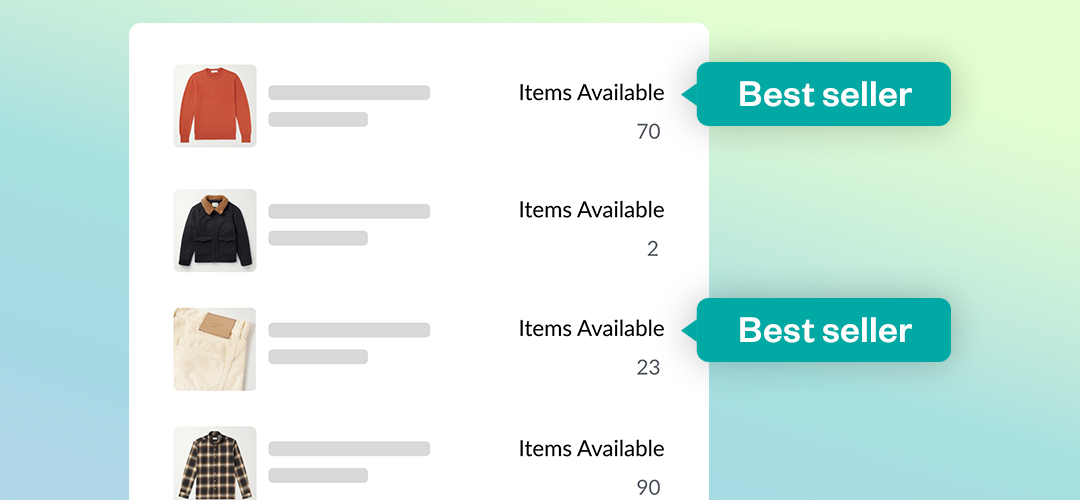5 sales strategies for retail partnerships in a changing market
Discover five effective sales strategies to strengthen retail partnerships and thrive and adapt in a changing market.

Retailers are adapting strategies to align with the evolving demands of the market. As your wholesale partners do what they can to mitigate losses and reduce expenses, the best strategies involve meeting retailers where they are. It’s time to be agile and it’s more important than ever to maintain communication. Use these remote sales strategies to benefit your business and wholesale partners’ bottom lines.
Offer Flexible Payment Terms
Do what you can to offer more flexible payment terms for price-sensitive buyers. This can enable or encourage buyers to continue placing orders with you in uncertain times. How can you accommodate your wholesale partners without creating hardships for your business? Would you be willing to ship goods on consignment? If you have preexisting consignment arrangements, would you consider extending your terms to accommodate for longer sales periods online? Take a long, hard look at your product offerings, contracts, and finances, then pivot your payment terms in a way that makes sense.
“All parties must cooperate, if the industry hopes to come out of this intact, then we must work with one another, not against. This means being understanding, communicative, open to extending terms when necessary, and generally having compassion for those suffering from this terrible situation. It doesn’t mean threatening and insisting upon payments and concessions that aren’t possible at this moment in time. It means accepting the inevitable and figuring out how to best cope with it.” GARY WASSNER, CEO, HILLDUN CORP
Leverage the Right Remote Working Tools
Break out the best remote-working tools to safeguard the strength of your communications. Look to virtual showrooms, messaging apps, virtual conferencing platforms and other tools to communicate with members of your sales team and your wholesale clients. Whether you’re communicating with your team or clients, try to convey a sense of calm. It’s also important to be swift in responding, however, be sure to maintain a set range of business hours and only communicate within those time frames (emergencies aside).
Further, your B2B e-commerce platform can help you send personalized marketing campaigns and linesheets to keep your most valued buyers informed of what’s new, how you’re pivoting and your approach for the seasons that lie ahead. You may not be able to control everything, but you can do your part to help maintain the strength of your team and your relationships with buyers.
 Prioritize Custom Offerings
Prioritize Custom Offerings
Map out your most valued wholesale partners’ needs. Next, research to find out what their shoppers are looking for these days. Sales may have declined, but consumers continue to order via e-commerce every day. What’s more, certain categories including athleisure, intimates and loungewear are taking precedence. Think about how you can edit your offerings to present retailers with assortments catered to their current needs. While you may not be able to prevent retailer markdowns, you can help boost full-price sell-through rates by offering a selection optimized for the current shopping climate.
Focus on Bestselling Designs
Don’t be afraid to let your smash hits run the show. These special circumstances require you to focus on what you can sell today. You already know they sell well, and you have the qualitative and quantitative data to back it up. In the same spirit, speak to your suppliers. Explore the extent of your options for bringing back top-selling products from seasons past. You can reintroduce them as longtime favorites from your brand or via special product drops or a capsule collection.
Repurpose Your Products
Finally, repurpose your current inventory. Save previously-scheduled product drops for a later date, whenever possible. Assess your stock to see what could be relevant next year and hold on to excess inventory in the aforementioned star categories rather than opting to discount them now. Socks, intimates, jewelry and leather goods tend to offer plenty of flexibility. You can even reconfigure your designs if it’s in line with your branding. Think along the lines of Eileen Fisher’s Renew line, tweaking the concept to reimagine unsold styles instead.
“Don’t let innovation stop, because this could be the window of opportunity. Use this time to reinvent how you do what you do, bring consumers new alternatives, new value, and in the process even reinvent your brand.”
DOUG STEPHENS, RETAIL FUTURIST
Related articles
Get on the list
Wholesale tips and industry news you can’t miss, delivered weekly


